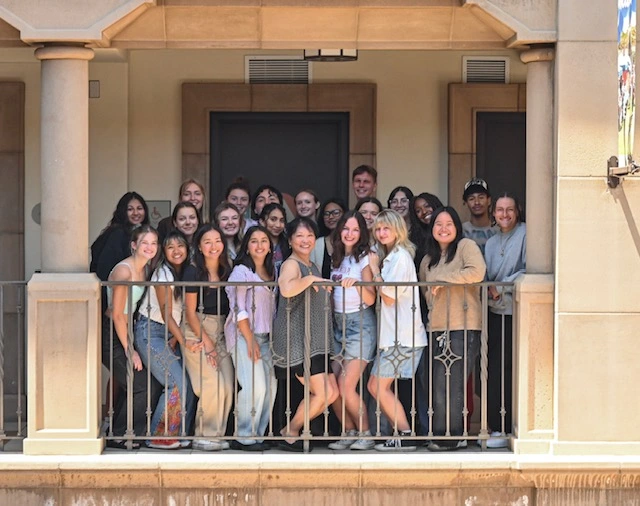Celebrating Filipino roots in America
ZOE MARIE ZAPANTA / ASST. A&C EDITOR
October is Filipino American History Month (FAHM) and its celebration commemorates the first recorded presence of Filipinos in the continental U.S., which occurred on Oct. 18, 1587, when a Spanish ship arrived in what is now Morro Bay, California. The celebration of this month was first recognized nationally in 2009.

Photo courtesy of @fanhs_national/Instagram
It is a common mistake to use the term Filipino American Heritage Month interchangeably with Filipino American History Month, but the Filipino American National Historical Society (FANHS) cited that the month of October should primarily be focused on “history” instead of “heritage.” “Heritage” is solely about cultural traditions handed down from the past whereas “history” includes the events, experiences and lives of people and their impact on society. According to the Pew Research Center, more than four million people of Filipino heritage live in the U.S., making them the second largest Asian-American group. This is mostly due to America’s colonization of the Philippines, which prompted many Filipinos to immigrate to the U.S.
Due to this large population, Filipinos played vital roles in the progression of the nation through their participation in social justice movements and vibrant culture. An example is the Filipino American social justice group Anakbayan USA. Established in 1998, Anakbayan USA seeks to unite the youth from different backgounds within the organization’s many chapters across the U.S. to advance the cause of national democracy.
The purpose of this month is to recognize the contributions Filipinos have made and continue making across American communities.
USD senior and president of the Filipino Ugnayan Student Organization (FUSO), Christopher Mauhay, reflected on what this month means to him.
“Filipino American History represents the stories and efforts that Filipino Americans have made before me in trying to foster a home, for not just themselves but also for future generations, here in America,” Mauhay said. “It includes the struggles and hardships, but also the victories and progress that they continue to make.”
To celebrate this month, FANHS Chapters, colleges, museums and community groups will be commemorating FAHM with various activities and events to bring awareness of the role Filipinos have played in American history. FANHS encourages organizations and communities across the U. S. to incorporate the theme of celebrating “The History of Filipino American Activism” in their FAHM events. FUSO celebrates this month by holding their annual “Kamayan Night,” where USD students can learn about the Filipino community through cultural performances. The event happens over a dinner featuring Filipino dishes while eating with one’s hands, customary to Filipino culture.
In the greater San Diego area, there are also many events being held to celebrate this month. For example, the San Diego Filipino Film Festival. According to NBC 7 the festival runs until Oct. 8 and brings together Filipino filmmakers to create a rich cultural experience for the diverse audiences of San Diego while inspiring the next generation of creative thinkers. The film festival will feature in-person workshops, panel discussions and the largest curation of Filipino films in the entire country.
Alongside these celebrations, USD sophomore Kyle Abaya, a general body member of FUSO, suggested how others outside the Filipino community can support the cause of the month.
“I’m a firm believer that you don’t need to be a Filipino to support Fil-Am culture. You can always be an ally,” Abaya said. “By attending events that are in support of the Filipino community, traditions and history and being accepting of people around you, (not just Filipinos) is a way to do that. Being open to others always is an idea deeply rooted in our values as Filipinos.”
Supporting underrepresented communities is a life-long process that continues beyond Filipino American History Month in October. By advocating for the stories of these communities to be remembered, these narratives can help shape the future.





Leave a comment